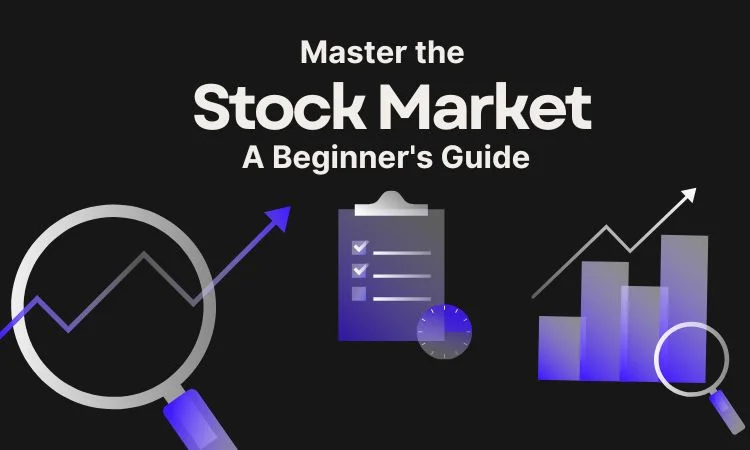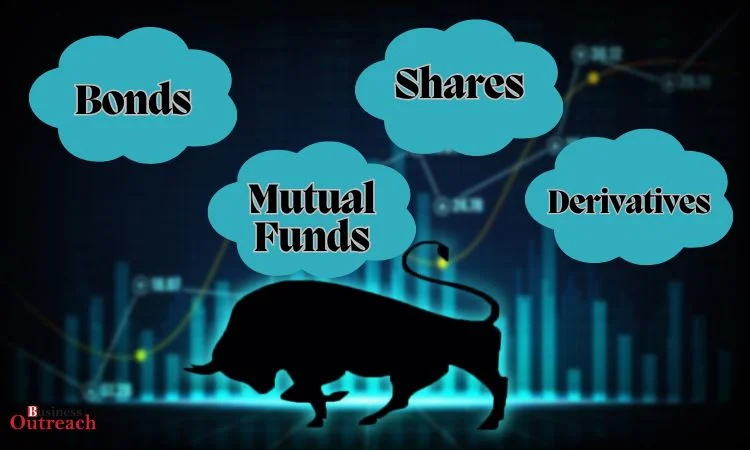Why take risks when we have different options to survive in the financial world? Yes, we are talking about the various investments and their related risk management associated with investing in them. The maximum the return on investment, the maximum the risk involved. If you are among those who are going to invest in the stock market, here are the basic guide tips that will ensure their ROI is high all the time. This article will help you to understand the basics of the stock market to be the master of it, so tune in to explore it deeply.

Image credit: ISM Institute of Stock Market
In this article, we will delve into the basic details of the stock market, such as what a stock is, what the share market is, and more. Every investor should know about the basics of the stock market, which is necessary to get an idea and master it.
What is a Stock?
In finance, a stock, translated to current accounting, is the percentage ownership of a company that one can purchase. Purchasing a stock makes an individual a stakeholder who owns a fraction of the corporation.
There are at least two principal ways in which a person can earn money for holding such shares: one may sell the stock for a profit if the value of the owned company rises, and some companies distribute in the form of dividends a share of profits to their stockholders. In the stock market, these stocks are called common stocks, and their prices fluctuate from time to time due to the activities of the corporation as well as the factors in the economy.
What is the share market?

The stock exchange is more commonly referred to as the share market. It is the space where the individuals who want to buy and the individuals who want to sell the shares of different companies come to interact. SEBI regulates the market. The regulator not only manages and protects the exchange but also ensures that all the companies in the exchange comply with all the laws and rules concerning disclosures, among other things.
When a corporation has 100 shares and you own 1, you own 1 percent ownership interest in the corporation. The stock market is an arena where the stock of many companies is bought and sold.
How Does the Stock Market Work?
A large marketplace where people purchase and sell equities is the stock market. For instance, a business can raise money by selling stocks if it wants to grow. All of the individuals who buy these stocks end up becoming shareholders, meaning they genuinely control a tiny portion of the business. The price of the company’s stock may increase when it performs well and generates profits. People can now profit from the sale of their stocks at a favourable price. On the other hand, when the business performs poorly, the stock price may continue to decline, resulting in financial losses for the public.
Assume, for instance, that you pay ₹ five each for ten shares of a corporation. You can wait for its prosperity until the stock price reaches₹10, at which point you can sell all of your shares for₹100 and make₹50. Due to various internal or external factors, your shares will only be worth ₹30 if the stock price drops to ₹3, which will result in losses when you sell.
Who Determines the Price of the Stock?
The market fixes the price of the share on the usual rules of demand and supply. Normally, the price of a share rises whenever a company is growing very fast, it is earning very good profits, or it gets new orders. Whenever the demand for the stock rises, more and more investors become interested in buying the stock, increasing the stock price.
Suppose that the company’s products received a backslash, which reduced the demand for the products. This will not just lose revenue from the company, but the stock price can also come down because the stockholders want to sell their shares as they fear losing more.
What are stock indices?
An index is created by grouping a few comparable equities from the companies listed on stock exchanges. The classification could be based on market capitalisation, industry, firm size, or other factors.
The shares of 30 firms make up the oldest index, the Sensex, which accounts for about 45% of the free float market capitalisation. Based on market capitalisation, this index is further subdivided into the Nifty, which comprises the top 50 businesses on the NSE. In addition, there are market cap indexes like the BSE Midcap and the BSE Small Cap, as well as sector indices like the Nifty IT and Nifty FMCG.
Types of Share Market
Primary
- This phase constitutes the corporation’s registration to sell a predetermined number of shares, aiming to raise essential funds.
- Typically carried out through an Initial Public Offering (IPO), this marks the company’s transition to being listed on a stock exchange.
- This route is crucial for companies looking to raise significant capital, and investors typically assess various factors before deciding to participate in an IPO.
Secondary Market
- Encompasses the subsequent trading of previously issued securities following their primary market sale.
- It helps investors sell their shares and withdraw their money in a calculated manner.
- In a transaction, one investor buys shares from another, usually with the help of middlemen like brokers.
- Brokers provide a variety of plans, each with its own set of features. Understanding these options is essential for making informed investment decisions and ensuring you’re choosing the best fit for your goals.
Essential Financial Tools for Trading in the Stock Market
A stock market involves a highly complex and dynamic trading environment for the trader to make decisions quickly and promptly, hence needing several financial tools for analysis of the market, identification of opportunities for engaging in trades, and proper execution. Some of the critical financial tools that are used when trading in the stock markets are:
- Trading Platform: This is the software or application that allows traders to access the market, place orders, monitor positions, and manage their accounts.
- Charting Tool: The charting tool helps visualise market trends, patterns, and signals with technical analysis techniques like indicators, oscillators, and Fibonacci lines. It depicts the movement of securities’ prices in graphical form using types of charts such as lines, bars, candlesticks, or points and figures.
- Scanning Tool: It helps traders find securities that meet certain criteria, such as price, volume, sector, industry, or technical indicators. A scanning tool helps traders narrow down their search and focus on the most promising opportunities.
- Backtesting Tool: This tool allows traders to test their strategies using historical data, helping them assess performance, risk, and profitability. It enables traders to refine their strategies, identify strengths and weaknesses, and build greater confidence and discipline in their approach.
- News Source: A news source keeps traders informed and prepared for market shifts, allowing them to incorporate fundamental analysis into their trading decisions.
These are just a few of the most important financial tools for trading in a stock market, but there are hundreds more that can be used to improve traders’ skills and results. The secret is to find the most appropriate tools according to a person’s trading style, goals, and preferences and to use them properly and consistently.
The Crucial Financial Instruments to Trade in the Stock Market

Bonds
Enterprises raise capital for projects by issuing bonds and also borrow from various investors who make regular monthly interest payments. These are fixed-income commitments in which investors provide funds for which they receive regular interest payments with the return of principal at bond maturity. The essential information about bonds is the face value, coupon rate, and maturity date. To invest in bonds, one needs to monitor yield changes, which enhances the significance of bonds in financial markets.
Shares
Companies raise capital by issuing shares, where the investors buy ownership of the company. Shareholders experience the glory and shortfalls when market forces affect the share prices. Shares are issued on the secondary market, and investors can buy or sell according to existing market conditions. Share ownership means to share both profits and losses, so it is a dynamic and riskier investment.
Mutual Funds
Investment vehicles serve as indirect investment media in which savings from individual investors are aggregated. A mutual fund is a unit issued by professional fund managers and represents the holdings of investors. Investment earnings appear in the form of unit values or get distributed as dividends to the investor. As an attractive option, mutual funds provide diversification for a portfolio on behalf of the investor, with expert management.
Derivatives
Derivative products can be used as hedges against financial instrument volatility by trading future prices. In this respect, investors commit to buying or selling shares or other securities at specified prices. For example, futures contracts enable a trader to hedge on price fluctuations while speculating on market movements. Understanding how to acquire or sell a futures contract is therefore crucial for investors to know about what is subtle in the trading of derivatives.
Conclusion
Stocks are one of the best ways to invest in order to increase one’s wealth. It does carry some amount of risk with it, however. Before actually investing, apart from having a basic understanding of stock market knowledge, an individual should consider his or her investment objective, risk capacity, and time horizon. Read the financial statements of a company and analyse its prospects. Get started today by opening a free Demat Account on Angel One and then move to analyse the stocks in minute detail.















